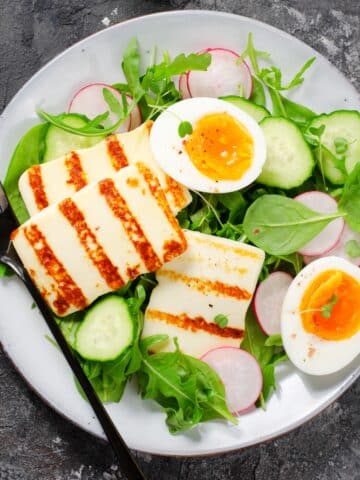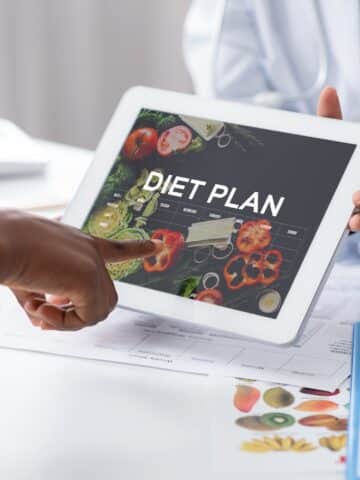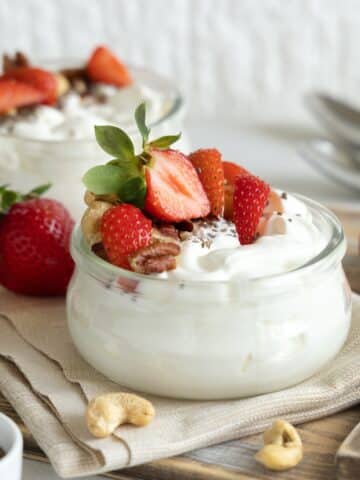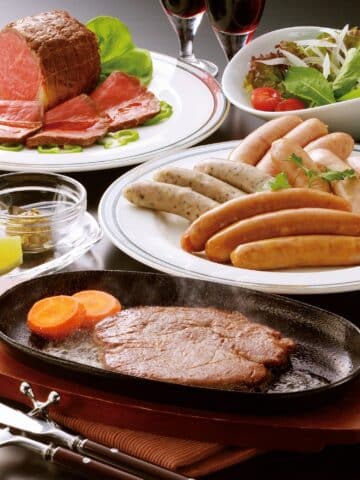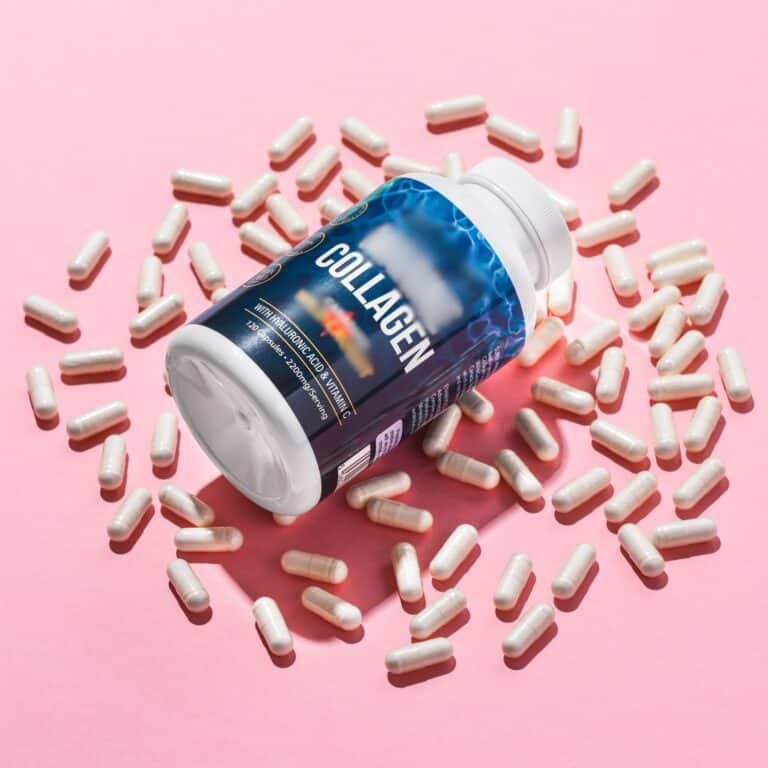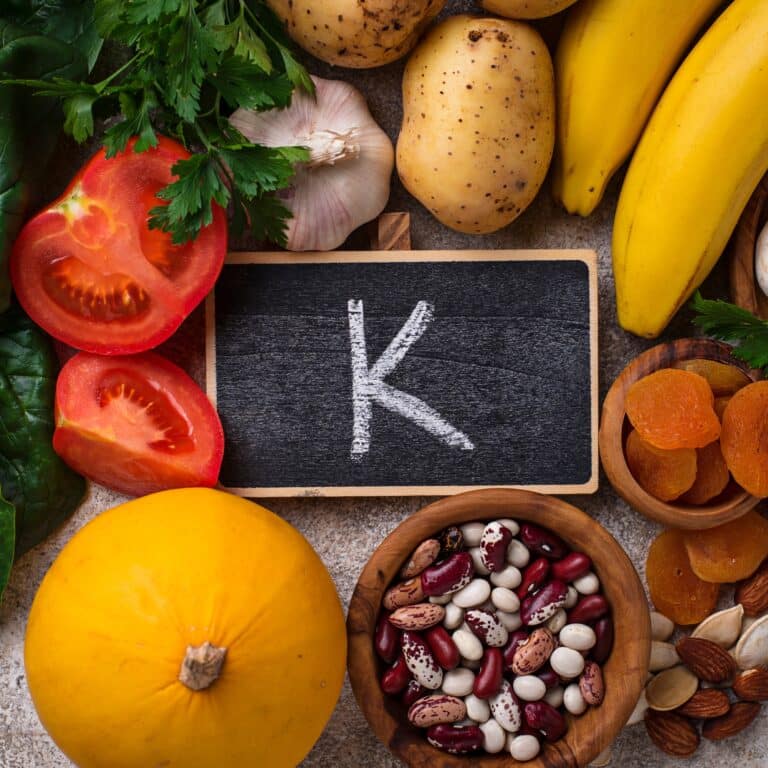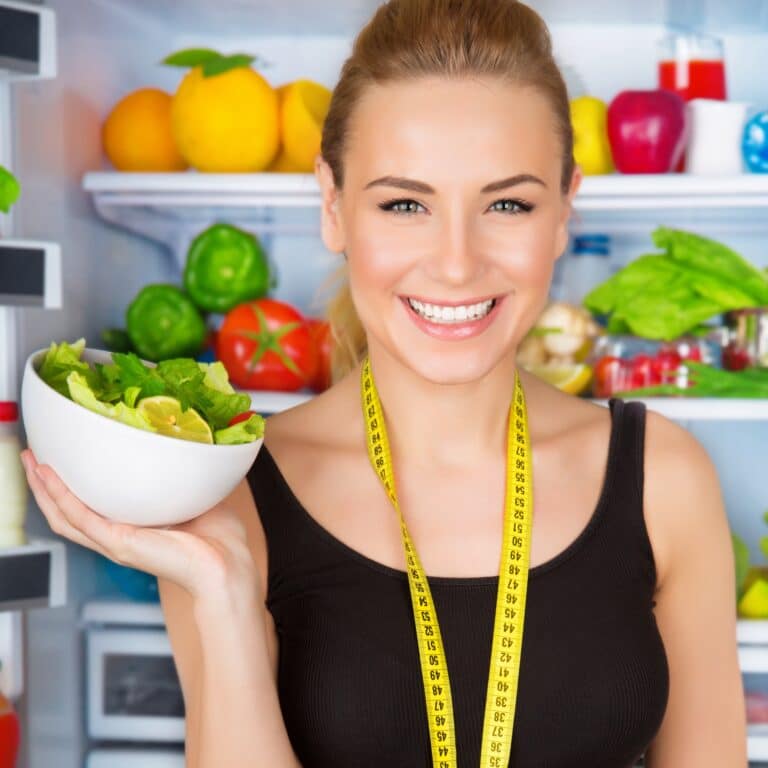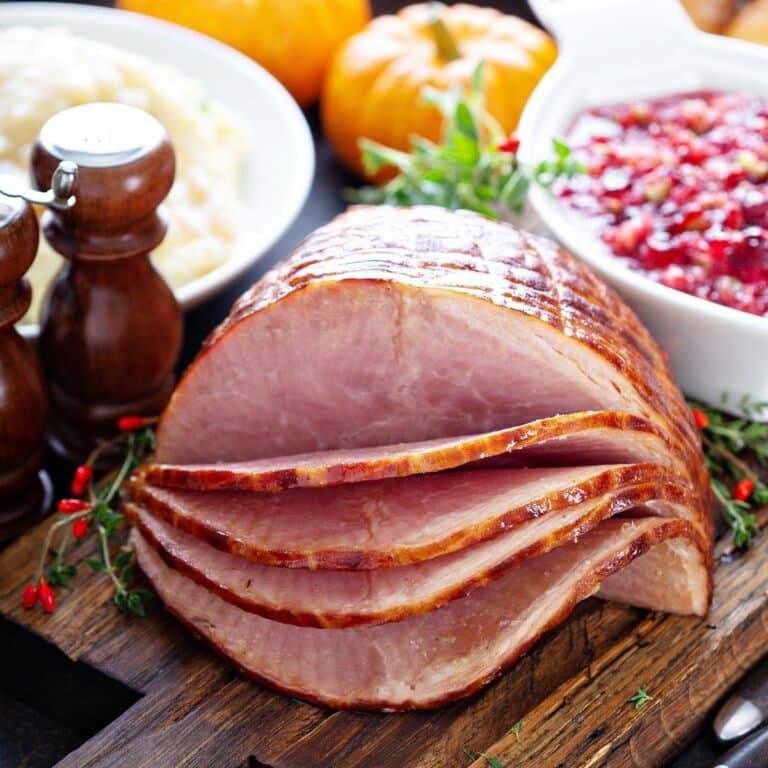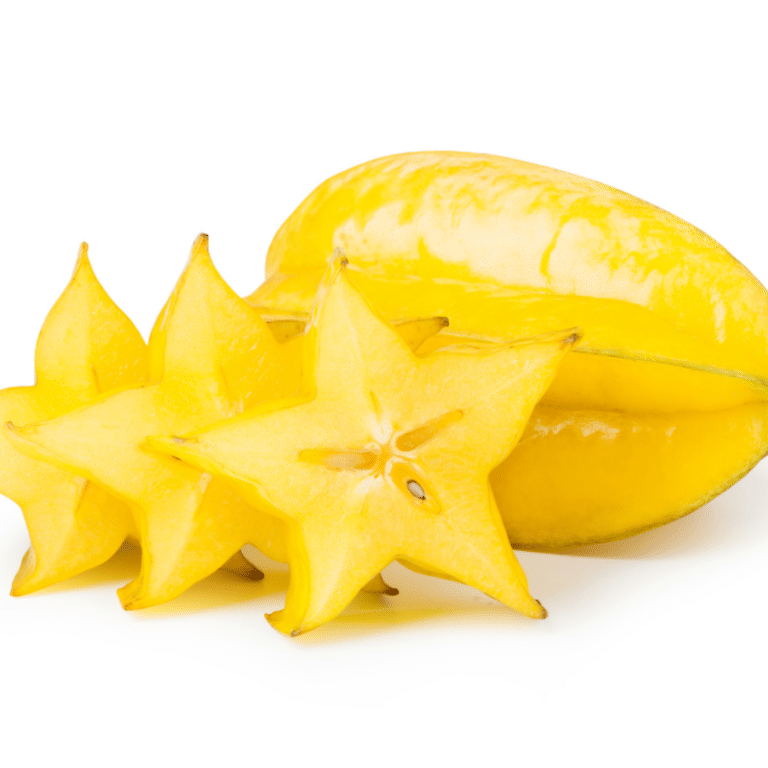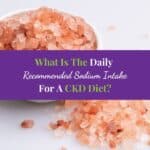Finding Low Sodium Canned Foods For a CKD Diet
Canned foods are typically a pantry staple and are cheap, long-lasting alternatives to frozen or fresh food options.
Most canned foods have a very long shelf life so there is no worry about the contents perishing, therefore less wasted food and money. Canned foods, however, are typically very high in sodium.
You really want to aim for consuming a following a low sodium kidney diet when you have CKD.
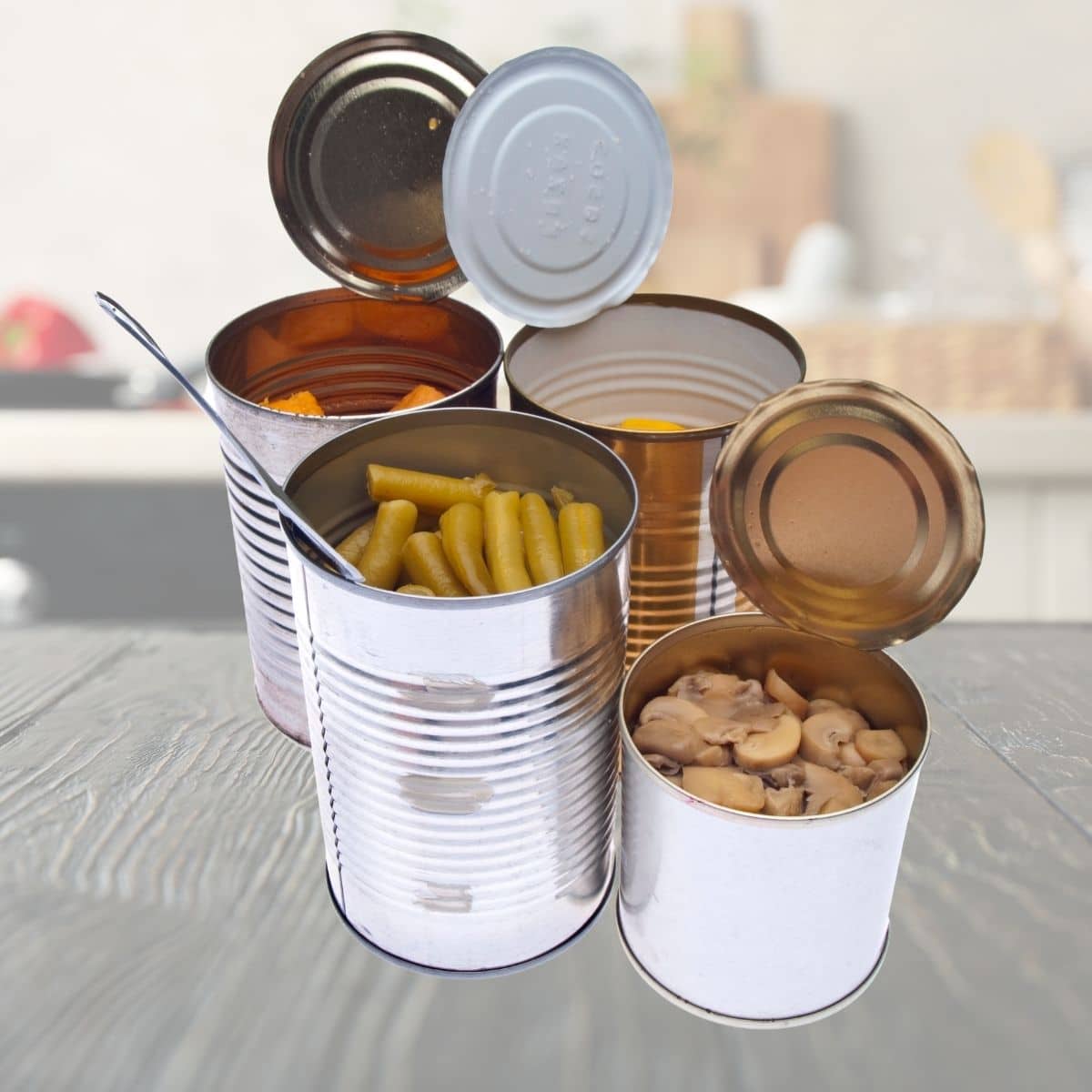
The search for low sodium canned foods can often feel like an unending task. With the advent of processed and packaged convenience foods, it's easy to lose sight of our dietary needs - especially when living with chronic kidney disease (CKD).
There are going to be diet changes by stage of Chronic Kidney Disease. But fear not! There is hope in this seemingly hopeless situation; you just need to know where to look.
Living with CKD doesn't have to mean sacrificing flavor or satisfaction from meals. Believe it or not, you can learn how to season food without salt.
Low sodium canned foods can provide a wealth of benefits without compromising taste or nutrition. Giving you more time and energy to focus on serving others around you. Keep reading for advice on what to look for and some helpful tips along the way!
Jump to:
- Role Of Sodium In CKD Diet
- Benefits Of Low-Sodium Diet
- Grocery Shopping Tips For Low-Sodium Foods
- Canned Foods With Lower Sodium Levels
- Serving And Portion Sizes Are Important
- Rinsing Canned Foods Can Lower Sodium Content
- Replacing Salt With Herbs And Spices As Flavorings
- Frequently Asked Questions
- Choosing Low-Sodium Canned Food
Role Of Sodium In CKD Diet
Sodium plays an important role in people with diseased kidneys. This is because high levels of sodium can increase blood pressure, which increases kidney workload.
Because of this, doctors may recommend that CKD patients lower their sodium intake to help manage their condition. If my doctor prescribed a renal diet, I would start making changes ASAP!
When monitoring sodium levels for a CKD diet, it’s important to consider what type of food you're eating and how much sodium is in each serving. Many canned foods contain large amounts of salt, so they should be avoided or eaten sparingly by those who need to limit sodium intake.
Luckily, there are plenty of low-sodium canned options available that make it easier to stick to dietary recommendations without sacrificing flavor.
Eating healthier doesn't have to be boring! With some creative meal planning and recipe ideas, it's possible to enjoy meals packed full of nutrition –– even when following a strict low-sodium diet.
For More Recipes and Ideas --->> Get Your Free Meals and Recipes That Are Perfect for Pre-Dialysis Diets, Pre-Dialysis with Diabetes, or Dialysis Diets.
Benefits Of Low-Sodium Diet
By reducing sodium intake, individuals may notice lower blood pressure levels (hey, you can still grill with these grilling blood pressure recipes), improved kidney health, reduced risk of heart disease, decreased risk of stroke, and healthier blood vessels all in one fell swoop!
The short-term effects are just as impressive; consuming less salt leads to increased feelings of alertness, reduced fatigue throughout the day, improved sleep quality at night, and enhanced mental clarity during the day.
This makes maintaining a low-sodium diet much easier than expected - especially compared with other dietary restrictions which can often be difficult or inconvenient to follow long-term.
In addition to these physical improvements, following a low-sodium diet (low sodium potluck dishes, anyone?) also has emotional benefits.
Studies have shown that people who consume natural foods and less processed foods tend to experience higher self-esteem due to feeling more in control over their eating habits.
Furthermore, those on this type of diet report having less anxiety surrounding food choices while still enjoying meals without sacrificing taste or variety!
Learning how does kidney failure affect the body can help you make better improvements FOR your body!
Grocery Shopping Tips For Low-Sodium Foods
Grocery shopping for low-sodium foods can be a daunting task. You could check out this amazing Comprehensive Healthy Renal Diet Grocery List Guide!
It's important to understand the rules and regulations when it comes to reducing your sodium intake, as well as what foods are naturally lower in sodium.
Here are some tips that will help make grocery shopping easy while still adhering to a low-sodium diet.
Check Nutrition Labels on Packaged Foods
First, check out the nutrition labels on packaged foods. Nutrition labels provide information about the amount of sodium per serving size and should always be consulted before buying something new or unfamiliar. Reading nutrition facts labels with CKD will literally change your life.
A good rule of thumb is if food has more than 140 milligrams of sodium per serving, it’s probably too high in salt content for someone following a low-sodium diet.
Create a Low-Sodium Foods List
Second, create a “low-sodium foods list” with items that you know have no added salt but fit within your dietary needs and preferences. This way when you go grocery shopping, you don't have to worry about researching new products every time; just stick to your ingredient list!
Some great options include:
- Fresh fruits and mixed vegetables (which tend to be naturally low in sodium)
- Dried beans and legumes
- Whole grains like bran cereal or oats
- Nuts and seeds, without preservatives
- Tofu, tempeh, & seitan (meat alternatives).
- Low sodium breakfast options
- Low sodium vegetable broth recipe
Not only do these items offer nutritional benefits, but they also taste delicious when cooked correctly!
Finally, compare different brands' nutrition facts panels side by side so that you can easily pick which one contains less sodium overall.
For example, soup may vary significantly from brand to brand depending on how much salt was used in their recipe formulation process. Shopping around gives you the opportunity to choose healthier options while staying mindful of your budget constraints.
It’s important when reading nutrition facts labels with CKD for their salt content to remember to also factor in any additional ingredients that might have added salt.
Sodium isn’t only listed as table salt; there are many other terms such as monosodium glutamate (MSG), sodium bicarbonate, disodium phosphate, and others which indicate a high level of salt.
Also consider potential sources of hidden sodium like flavorings, preservatives, and condiments. These often contain higher levels of salt than standard processed foods so need special consideration when selecting appropriate options for a renal diet.
It's also important to always check phosphorus levels and potassium levels when deciding on a kidney-friendly diet. Low phosphorus foods are welcomed on the CKD diet!
By understanding how to read packages properly and making smart choices at the store, anyone following a low-sodium diet can find healthy options quickly and efficiently.
With careful planning ahead of time plus comparison shopping skills up your sleeve – there really isn’t anything stopping you from finding delicious ingredients for meals perfect for your lifestyle!
Canned Foods With Lower Sodium Levels
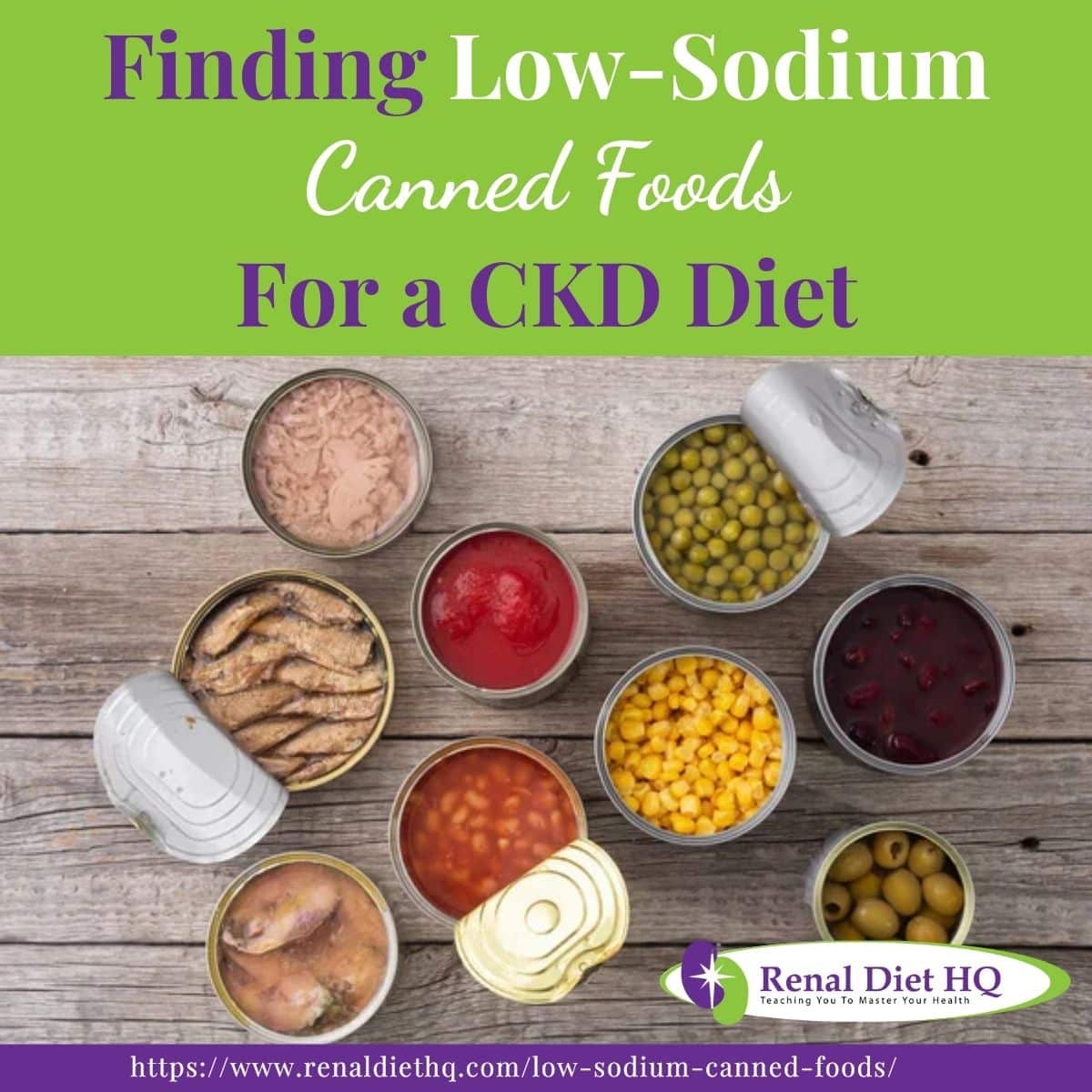
Finding the right low-sodium canned foods for a renal diet can be tricky. Fortunately, there are plenty of options out there that make it easy to stay on track.
From sodium-free canned vegetables to reduced-sodium canned soups, you’ll find everything you need to keep your salt levels in check.
When it comes to vegetables, it is important to choose low sodium options. Canned carrots and corn can be good choices as long as they are labeled as "no salt added" or "low sodium." These vegetables are also rich in vitamins that are important for overall health.
Additionally, it is important to watch portion control for CKD patients, as eating too much of any food, even low-sodium vegetables, can be harmful to the kidneys.
If you want even more variety, consider trying some other types of lower-sodium canned products such as beans or lentils. Knowing which lentils are good for kidney disease is important!
These nutrient-packed legumes are versatile enough to use in salads, dips, stews, soups, and more. Give this barley corn salad a try!
Not only do they provide essential minerals like iron and magnesium, but their high fiber content helps promote good digestive health too. can also be a healthy and convenient meal option, but many canned soups are high in sodium.
It is important to choose low sodium options, such as kidney friendly chicken noodle soup recipe or vegetable soup. It is also important to read the label carefully, as some soups labeled "low sodium" may still contain significant amounts of sodium.
When it comes to meat, it is important to choose low sodium options that are also low in phosphorus.
Canned salmon, tuna, and chicken can be good options, as long as they are labeled as "no salt added" or "low sodium." These meats are also a good source of high-quality protein, which is important for maintaining muscle mass and overall health.
However, it is important to watch the portion sizes, as eating too much protein intake can be harmful to the kidneys.
Different stages of chronic kidney disease require different levels of sodium per day, so speaking with a doctor or a nutritionist about specific dietary requirements is always wise before making any changes in order to ensure optimal health and wellness goals are being met.
Sometimes the best choice is frozen foods, which often have very little processing and are lower in sodium. If you can choose a product that is frozen over canned, that would be a great choice as long as the label indicated no or low amounts of sodium in the serving.
With so many delicious light in sodium options available, creating balanced meals with all the nutrients you need doesn't have to feel overwhelming anymore!
Serving And Portion Sizes Are Important
When following a renal diet, serving and portion sizes are essential for controlling sodium intake even when eating low sodium meals, and it is important to be aware of the daily value recommended by your healthcare provider.
You can start understanding serving and portion sizes by doing a low sodium breakfast first!
Here are some tips to consider to lower your sodium intake:
- Check labels for serving size information
- Divide large portions into smaller servings before eating
- Use measuring cups or spoons instead of eyeballing amounts
- Avoid processed convenience foods with excess sodium
Being mindful of these guidelines will help ensure that you get the right amount of food while staying within your daily sodium limits. By incorporating portion control measures into your meal plan, you can enjoy delicious low-sodium canned foods as part of a balanced CKD diet.
Rinsing Canned Foods Can Lower Sodium Content
Even for low and reduced sodium options, it can help to drain and rinse the extra sodium off some canned food options. The purpose behind rinsing canned foods is simple; it reduces the total sodium intake by washing away some of the salt used during the canning process.
Studies have shown that when these techniques are correctly applied, up to 40% of sodium can be removed from certain types of food. This level of reduction allows individuals with kidney disease or other medical conditions to enjoy more items without having to worry about going over their daily recommended limit.
In addition to rinsing, using salt-free seasonings and avoiding high-sodium ingredients such as monosodium glutamate (MSG) may also help reduce your overall sodium intake.
Although no single strategy will completely eliminate processed salts and additives, each small step towards reducing dietary salt helps you maintain healthy kidneys while still enjoying flavorful meals!
Replacing Salt With Herbs And Spices As Flavorings
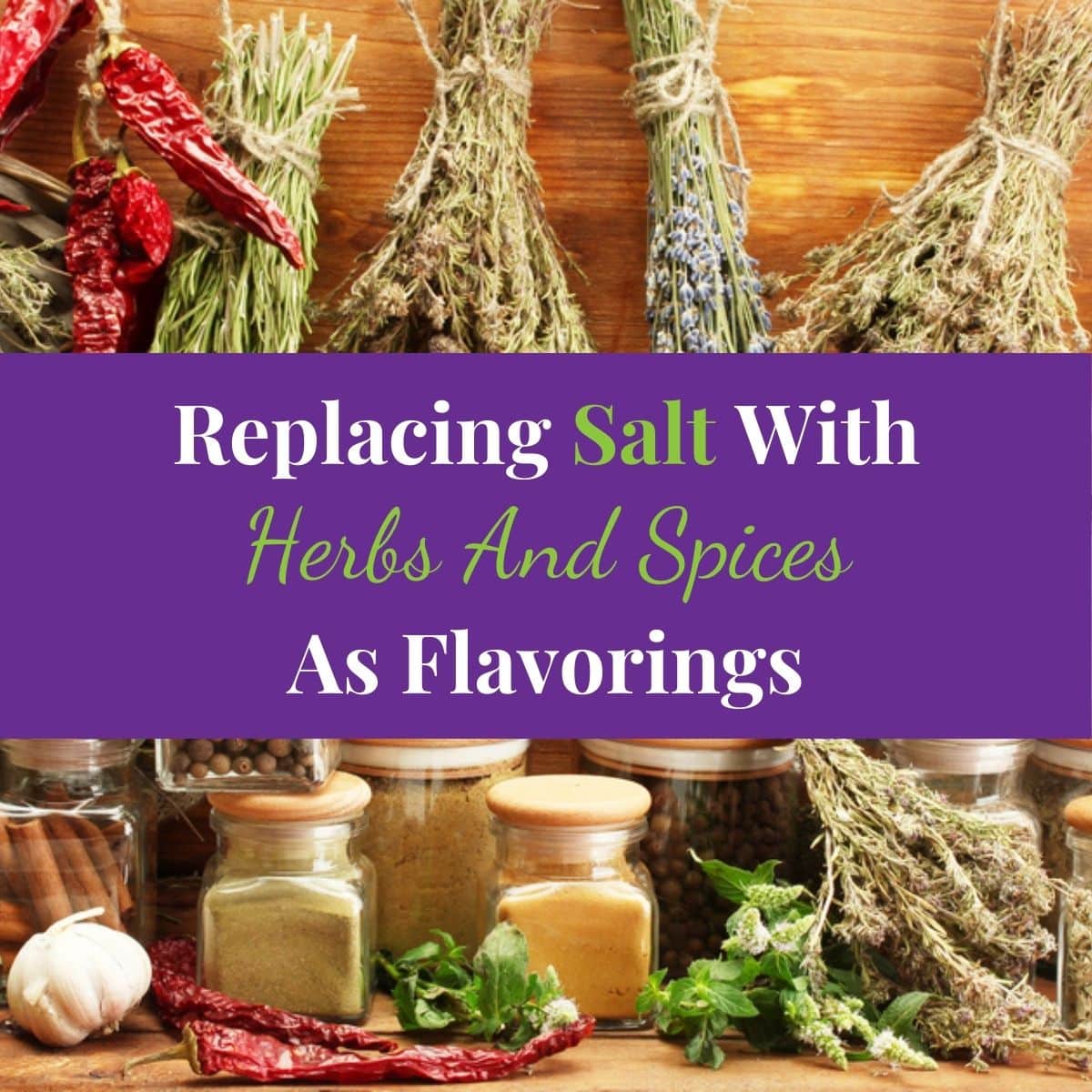
Replacing salt with herbs and spices as flavorings is a great way to create delicious, low-sodium meals. You should avoid using a salt substitute as it might be potassium chloride and add potassium to your meal.
Stick to the greener stuff! Herbs and spices are packed full of minerals, vitamins, antioxidants, and essential oils that can help reduce sodium levels while still providing plenty of flavors. There are many different types of salt-free herbs and spices available on the market today; from single spice blends to all-in-one seasoning mixes.
Herb and spice blends such as Italian seasoning provide a flavorful combination of herbs and spices in one convenient package. These seasonings often contain basil, oregano, marjoram, thyme, rosemary and other ingredients for an easy addition to any meal.
Sodium-free seasonings like Mrs Dash add a salty taste without adding extra sodium — perfect for those watching their sodium intake.
With so many options available, it's easy to find something that fits your taste buds and dietary needs.
Whether you're looking for an all-purpose blend or something more specific like Greek or Mexican cuisine, there's sure to be something that suits your palate perfectly! So go ahead - experiment with some new flavors and get creative in the kitchen. Your body will thank you!
Frequently Asked Questions
With many people being diagnosed with CKD, knowing the recommended amount of sodium to consume per day can help those with CKD optimize their health through nutrition.
The National Kidney Foundation suggests limiting your daily sodium intake to less than 2,400mg when following the best ckd diet plan for you!
This may require careful consideration when selecting low sodium meals or snacks as part of one’s overall food plan.
Meal planning should also include regular monitoring of the intake of other minerals like the intake of potassium, phosphorus, and calcium which are important for managing symptoms associated with kidney failure.
When grocery shopping for a daily diet that meet these criteria, it's important to read labels carefully and opt for items that have less than 140mg of sodium in them.
Canned green vegetables are usually good options but be sure to check levels as they vary greatly between brands. Eating balanced meals prepared from fresh ingredients will ensure you get all the nutrients necessary while adhering to CKD diet guidelines and keeping within desired range of recommended sodium levels.
By closely watching one’s nutrient intake while following a renal diet, you can improve your quality of life by having more energy throughout the day and feeling better physically and mentally!
If low-sodium canned foods aren't an option, there are other ways to reduce your sodium consumption while still enjoying flavorful meals.
For instance, consider buying beans, corn, peas, and tomatoes; these can be easily incorporated into dishes such as soups and salads without adding extra sodium content.
Are tomatoes bad for kidneys? You may be surprised by the answer.
Additionally, opt for fresh fruits and fresh vegetables whenever possible since they tend to have fewer additives. You can also look into purchasing frozen produce which is often free from preservatives and additional salt.
No matter what type of food you choose, make sure to read labels carefully before making any purchases.
This way you'll know exactly how much sodium each product contains and avoid exceeding your recommended dietary limits.
With a little research and careful consideration, you should be able to find tasty low-sodium canned food substitutes that fit within your renal diet plan!
Choosing low-sodium options for a CKD diet can be daunting. Thankfully, there are now many options available for those looking to buy no-salt or reduced-salt canned foods. Here is an overview of the best ways to find and access low-sodium grocery delivery:
Use meal delivery services – Meal delivery services like Freshly and Sun Basket have pre-packaged meals tailored specifically towards people who need low-sodium diets.
This makes it easier to get healthy meals delivered right to your door without having to worry about going to the store yourself.
Ask your doctor or your nutritionist – If you’re on a specific kidney diet, ask your doctor what they recommend as far as dietary guidelines and where they usually recommend shopping for their patients with similar needs.
Contact local health organizations – Local health clubs or organizations may have information about nearby stores that offer reduced salt canned goods.
By taking these steps into consideration when searching for a low-sodium grocery store, you can make sure you are following a nutritious and a healthy diet while still enjoying delicious cuisine that fits within your CKD Diet plan.
Finding tasty, yet nutrient rich dishes has never been easier! In addition to these tips for preparing low-sodium meals, there are also many resources available online such as cookbooks specifically designed for CKD diets that provide nutritional information and helpful cooking advice.
There are also websites dedicated to helping people find tasty and healthy food options that fit their dietary needs, including those looking for foods lower in sodium content. Utilizing these resources can make finding flavorful low-sodium meal ideas easy and enjoyable!
Choosing Low-Sodium Canned Food
The challenge of finding canned food that is low in sodium for a CKD diet can be daunting. For those looking to maintain the recommended daily intake, it's important to take extra care when grocery shopping and meal planning.
Have you considered low sodium and potassium meals? With a few simple tips and tricks, however, one can make sure they're getting all their essential nutrients without exceeding their salt allowance.
First and foremost, look out for food labels like 'low-sodium' or 'no added salt'. These items contain significantly less sodium than regular products, making them ideal choices for someone on this type of diet.
Additionally, there are plenty of healthy alternatives to canned foods such as fresh fruits and vegetables or frozen meals which often have fewer preservatives and additives.
Finally, if you find yourself overwhelmed by the sheer amount of options available at the grocery store, consider visiting specialized stores with pre-made options specifically designed for people with kidney disease.
At the end of the day, living with a CKD diet doesn't have to mean sacrificing flavor or nutrition. With careful consideration given to what goes into your shopping basket and onto your plate, I'm confident anyone following these guidelines will be able to enjoy delicious meals that fit within their desired dietary restrictions!

